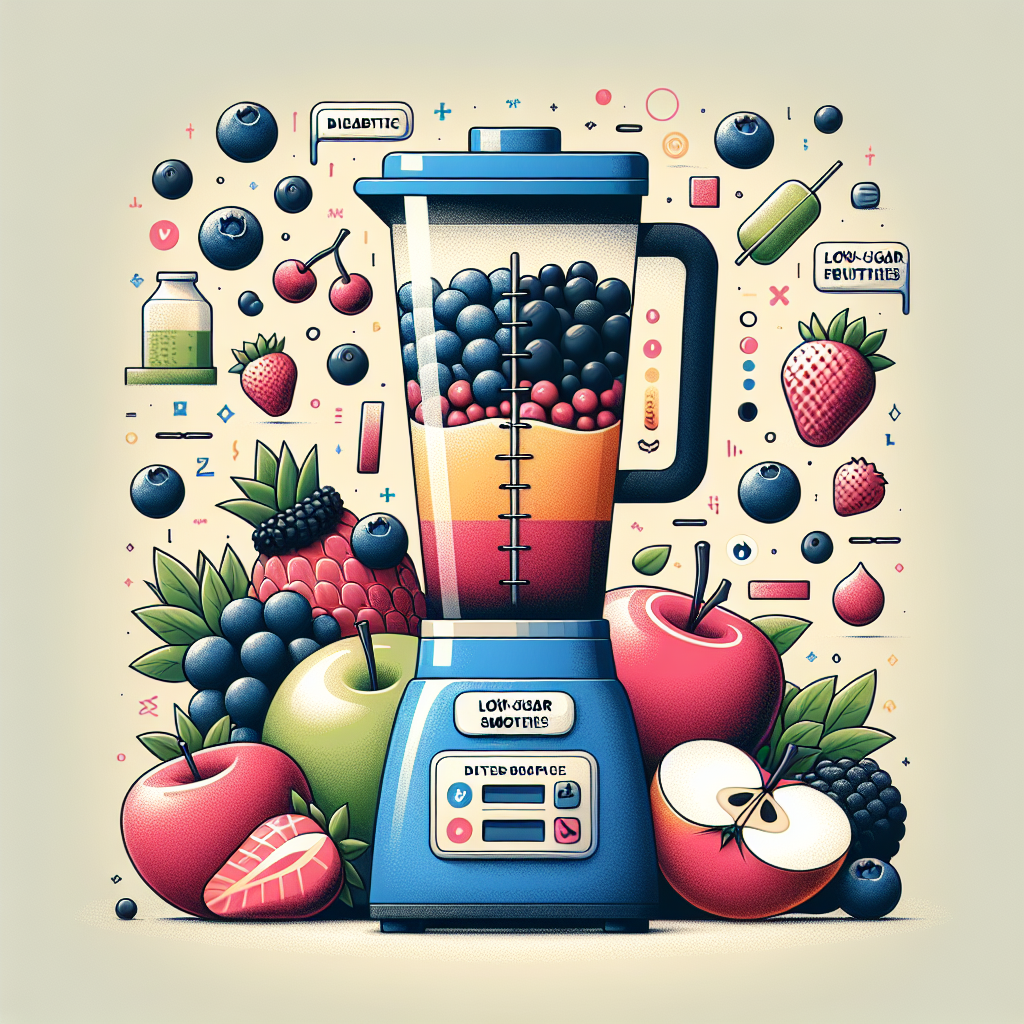If you enjoy smoothies but worry about blood sugar spikes, these diabetic fruit smoothie recipes offer low-sugar, nutrient-dense options that keep flavor high and carbs sensible. Designed to prioritize fiber, protein, and healthy fats, the blends below are easy to make and can fit into blood-glucose friendly meal plans without feeling like a sacrifice.
Diabetic smoothie recipes: low-sugar basics
When building low-sugar blends, think beyond fruit alone. The best smoothies for diabetics combine small portions of lower-glycemic fruits (berries, green apple, or kiwi) with protein (Greek yogurt, cottage cheese, or protein powder), healthy fats (avocado, nut butter, seeds), and a liquid base that won’t add hidden sugars (unsweetened almond milk or water). These elements slow carbohydrate absorption, reduce post-meal blood sugar spikes, and keep you fuller longer.
What to include and what to skip
Focus on whole ingredients and measure servings. Avoid fruit juices, sweetened yogurts, and flavored milks. A typical low-sugar diabetic smoothie aims for about 15–30 grams of carbohydrates per serving, balanced with at least 10–15 grams of protein and a tablespoon of healthy fat.
Sample low-sugar blends you’ll actually love
Below are three simple ideas that demonstrate how to make satisfying, low-sugar smoothies. Adjust portion sizes to match your meal plan and taste.
- Berry+Greek
- 1/2 cup mixed berries (fresh or frozen)
- 3/4 cup plain Greek yogurt (2% or full-fat for more satiety)
- 1 tablespoon chia seeds
- 1/2 cup unsweetened almond milk
- Optional: a few ice cubes and cinnamon
- Green Apple Avocado
- 1/2 small green apple, cored
- 1/4 ripe avocado
- 1 cup spinach or kale (packed)
- 1 scoop unflavored or vanilla protein powder
- 3/4 cup water or unsweetened oat milk
- Peanut-Cocoa Breakfast
- 1 small frozen banana (half for lower sugar)
- 1 tablespoon natural peanut butter
- 1 tablespoon cocoa powder (unsweetened)
- 1/2 cup cottage cheese or high-protein Greek yogurt
- 1/2 cup water or unsweetened nut milk
Special considerations: blood pressure and medication effects
People looking for smoothies for diabetics and high blood pressure should watch sodium, added sugars, and caffeine. Emphasize potassium-rich whole foods (leafy greens, avocado, and berries) and avoid processed ingredients that carry hidden salt. If you take blood-pressure or diabetes medications, check with your clinician before making large changes to your diet—rapid weight loss or sudden increases in potassium-rich foods can interact with some drugs.
For broader dietary approaches that combine soups, shakes, and structured meal plans aimed at improving metabolic health, consider exploring clinically-informed programs such as the NHS “soup and shake” approach, which looks at calorie-controlled interventions to reverse type 2 diabetes: NHS soup and shake diet and reversing type 2 diabetes.
Tips for making smoothies work for you
- Portion control matters: use measuring cups to keep carbohydrate grams predictable.
- Add fiber and protein to blunt glycemic responses—think seeds, nuts, Greek yogurt, or protein powder.
- Blend whole fruit, not juice, and choose lower-sugar fruits when possible.
- Test blood glucose: if you monitor, try a new recipe and check levels at one and two hours post-consumption to learn how it affects you.
Nutrition resources
Reliable guidance on healthy eating for people with diabetes can help you refine recipes and meal timing. See the CDC’s practical guidance for managing diet with diabetes here: CDC guidance on healthy eating for people with diabetes.
Quick FAQ
Q: Can people with diabetes drink smoothies every day?
A: Yes, if they’re balanced and portion-controlled. Choose recipes high in fiber and protein and limit total carbohydrates. Rotate ingredients to avoid excess sugar and to meet nutrient needs.
Q: Are frozen fruits okay?
A: Absolutely—frozen berries and chopped fruits are convenient and preserve nutrients. Use half portions of higher-sugar fruits like banana, or pair them with extra protein and fiber.
Q: How do I lower the sugar in favorite smoothie recipes?
A: Reduce the amount of fruit, swap in more vegetables or a small portion of low-glycemic fruit, and add protein or healthy fats to balance the carbs.






